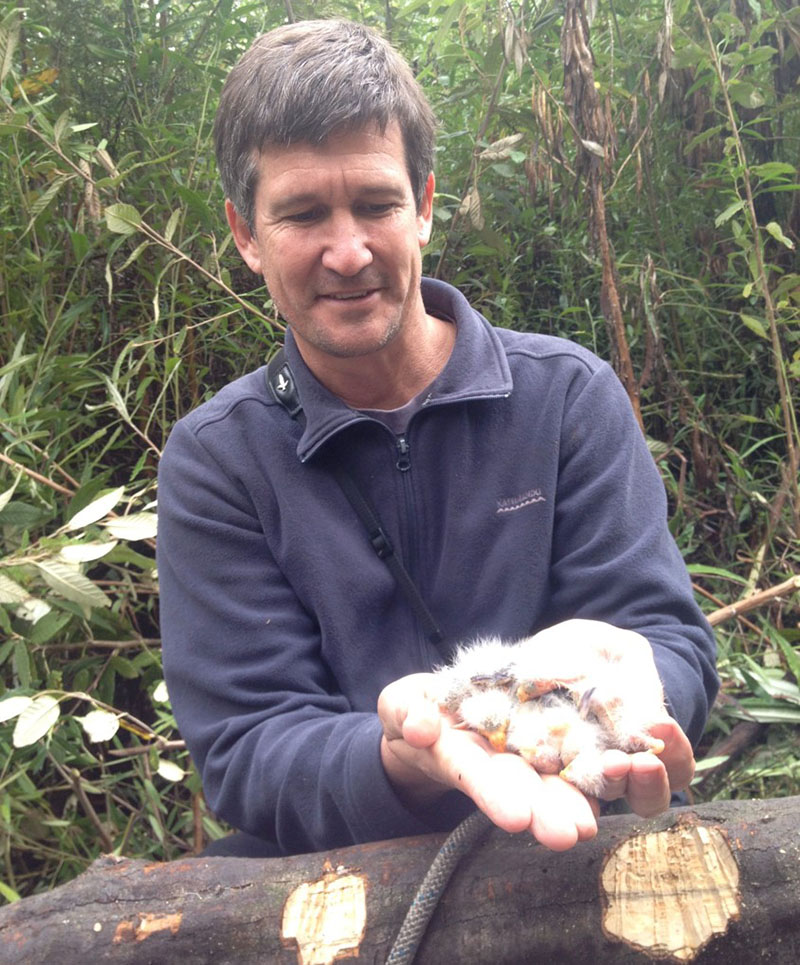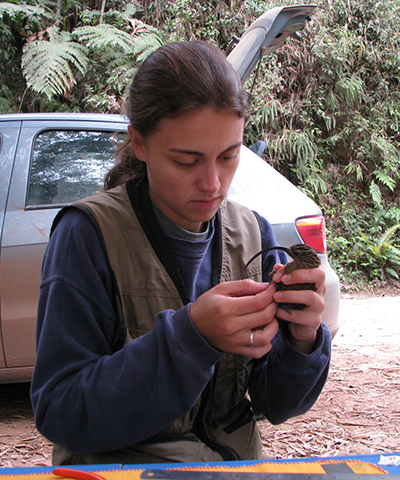
Project: 2.2.3
Conservation and management of the endangered forty-spotted pardalote
Project Leaders: Rob Heinsohn
Why is the research needed?
The forty-spotted pardalote is a highly specialised species that has undergone large declines, and is now nationally endangered. Historically, the species was widely distributed across eastern Tasmania; however, it is now largely confined to a few islands off the coast of Tasmania, and headlands and peninsulas in south and south-eastern Tasmania.
Forty-spotted pardalotes use tree hollows for nesting, and are dependent on white gum (Eucalyptus viminalis), where they forage for insects and manna, the sugary substances produced by white gums in response to insect attack.
Forty-spotted pardalotes are threatened by habitat loss and degradation, introduced predators like sugar gliders, competitors, drought and limited dispersal ability. Previous research by this team also discovered a previously unknown but extremely important threat to the pardalotes in the form of a parasite. A screw worm fly (Passeromyia longicornis) lays its eggs in the nests of forty-spotted pardalotes, and the maggots burrow into the skin of nestling pardalotes and feed on their blood. This leads to very high mortality rates of flystruck pardalote nestlings and is now the primary cause of nesting failure identified in this species. 
 Forty-spotted pardalote eggs in a nest. Photo: Fernanda Alves
Forty-spotted pardalote eggs in a nest. Photo: Fernanda Alves
How will the research help?
To address the drastic decline in forty-spotted pardalotes we have begun a research program that identifies and fills knowledge gaps about the key threats faced by the species, and helps us better understand its current distribution and habitat needs. The research is expanding previous knowledge and already our work has had two major wins that will lead to better conservation outcomes.
- An ongoing nest box deployment and monitoring program led to the discovery that parasitic fly larvae are responsible for high nestling mortality. This research project is now developing techniques for managing the fly and improving nesting success.
- Our monitoring program recently led to the discovery of a new population of forty-spotted pardalotes in a location beyond their known range – a major conservation win for this species. Further, our monitoring program has allowed us to derive the first robust population estimates for this still relatively poorly known species.
With further research we hope to identify more new populations of forty-spotted pardalotes, and improve management of known threats to the species. This will allow us to halt the decline of the species and work towards recovery across its former range.
What research activities are being undertaken?
We have been monitoring forty-spotted pardalotes over their known range to track changes in their population patterns, including where they are and their abundance. This has enabled us to identify the habitat characteristics that are most important for supporting pardalote populations, and to identify ways to make new populations safe from known threatening processes. This research will be used to develop a framework and feasibility analysis of the potential for experimental reintroduction of the species to parts of its historical range.
We have also been monitoring the breeding success of forty-spotted pardalotes at a network of nest boxes on North Bruny Island. We are trialling and testing techniques to manage the screw worm fly nest parasites using a bird-safe insecticide to fumigate nests, which substantially improves nestling survival. We are also experimentally deploying new nesting boxes into remaining populations of unmanaged pardalotes to establish whether they respond to management actions.
Our main research activities are:
- Deploying nest boxes across the current known species range, particularly targeting remaining mainland Tasmanian sites where the birds persist.
- Researching methods for controlling the parasitic screw worm fly to improve nesting success.
- Surveying historical locations for potentially persisting populations of forty-spotted pardalotes.

 ANU researchers in the field. Photo: Dejan Stojanovic
ANU researchers in the field. Photo: Dejan Stojanovic
Who is involved?
We are collaborating with:
- The Tasmanian Department of Primary Industry, Parks, Water and Environment (DPIPWE)
- Sustainable Timber Tasmania
- Forest Practices Authority
- Weetapoona, and South East Tasmanian Aboriginal Corporations
- NRM South and other relevant NGOs, local government and community groups.
Our program is designed so that these stakeholders are informed immediately of research results and can take action without delay. This is essential given the precarious state (e.g., small or fast declining numbers) of the target species.
This project is also supported by The Holsworth Wildlife Research Endowment & The Ecological Society of Australia, BirdLife Australia, and the Mohamed bin Zayed Species Conservation Fund.
Where is the research happening?
The research will take place on Bruny, Maria and Flinders Islands and adjacent Tasmanian mainland sites.
When is the research happening?
This project began in 2015, and will continue until December 2020.
Further information
For more information contact:
Fernanda Alves - fernanda.alves@anu.edu.au
Top image: A forty-spotted pardalote during monitoring. Photo: Fernanda Alves
-
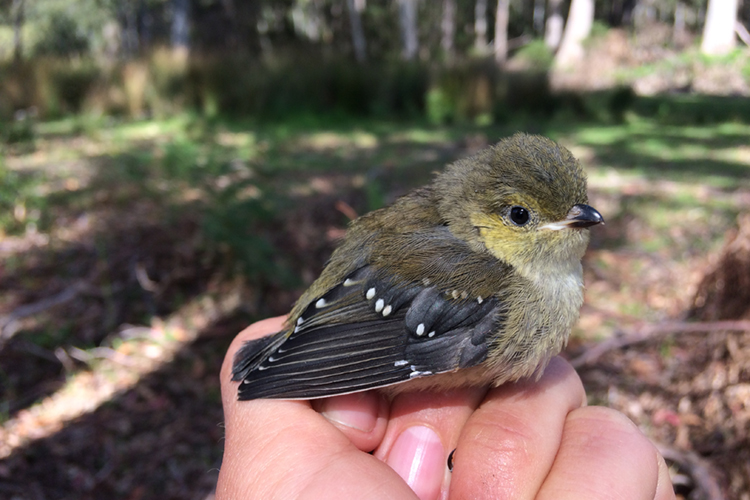
Self-fumigating birds and manna from heaven: The remarkable forty-spotted pardalote
Tuesday, 12 March 2019 -
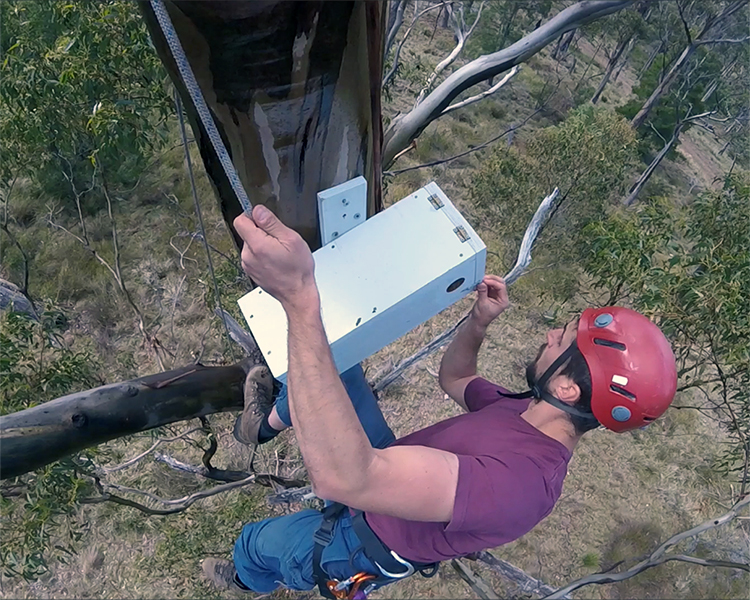
Out of the box - Designing nest boxes for conservation success
Tuesday, 13 February 2018 -
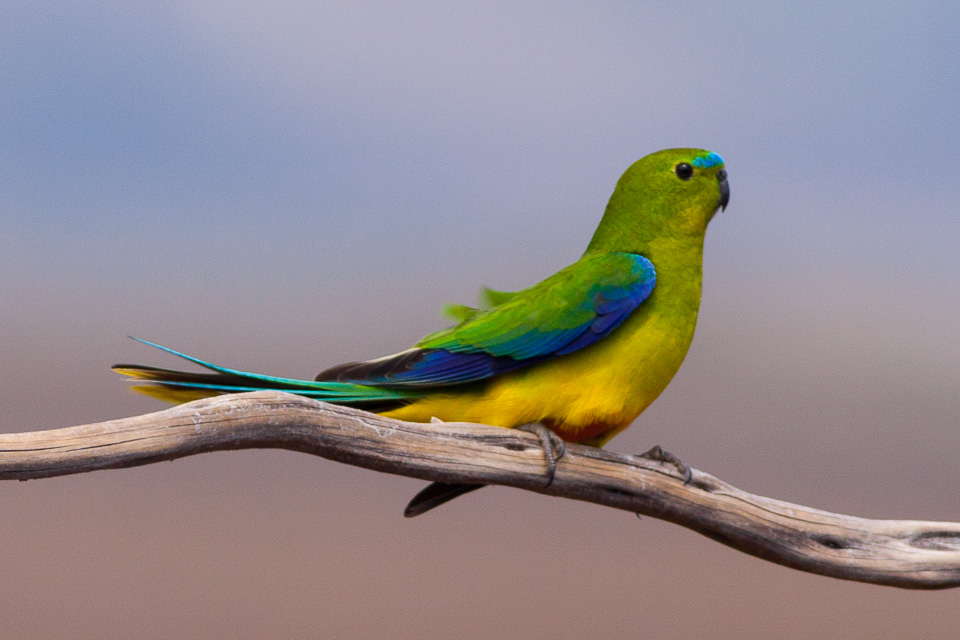
Tackling threats to endangered hollow nesting birds in Tasmania
Friday, 06 May 2016 -
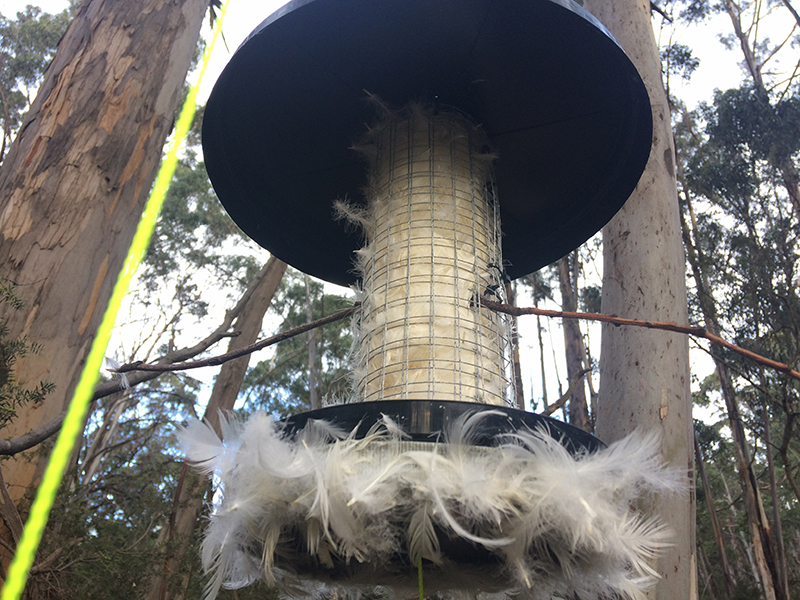
Researchers help endangered birds to ‘self-fumigate’ their nests
Thursday, 22 October 2020
